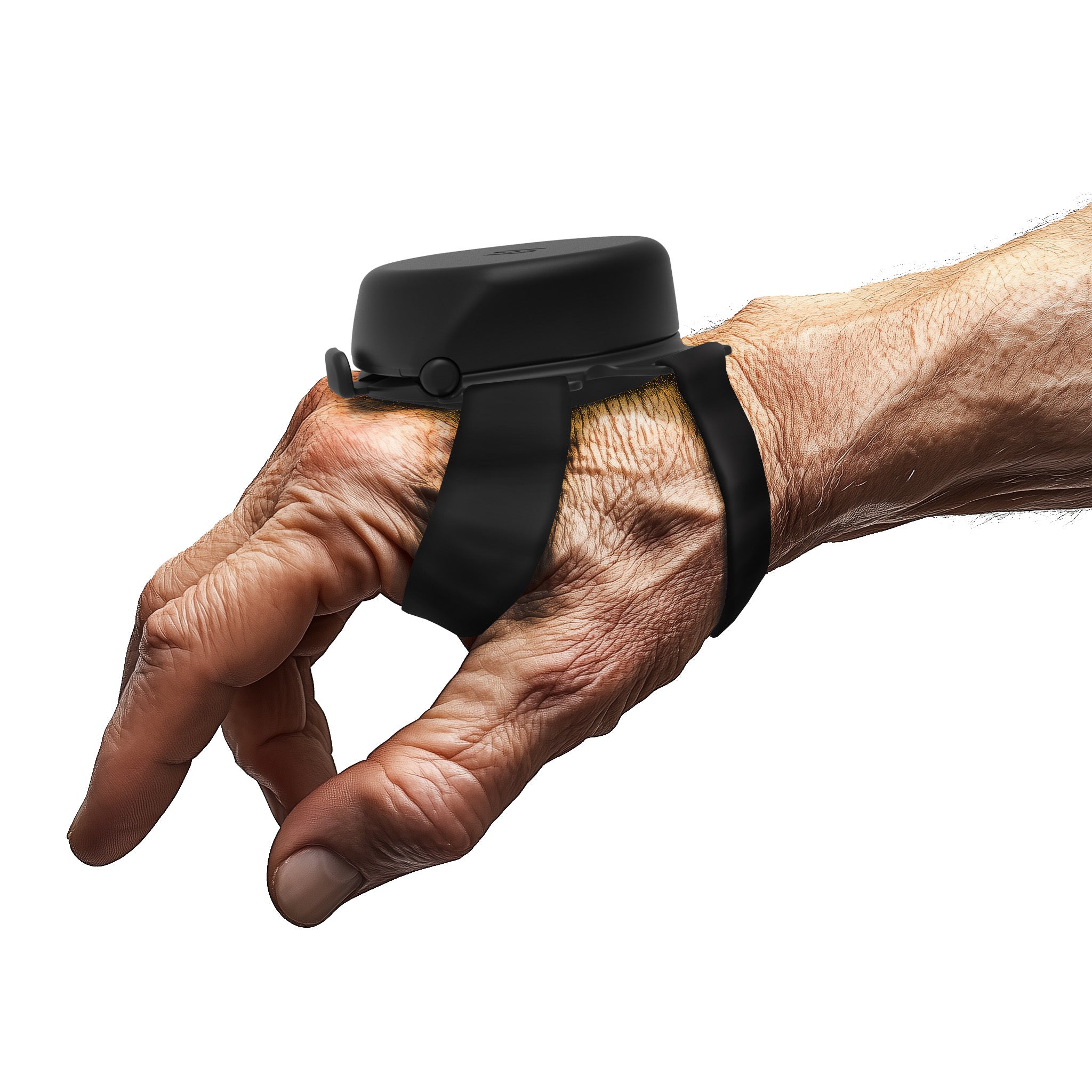Essential Tremor is one of the most common yet least understood movement disorders in the world. Affecting an estimated 10 million people in the United States alone, it is characterized by rhythmic, involuntary shaking — most commonly in the hands, but it can also impact the head, voice, legs, or even the trunk. For many people, the tremor worsens over time, interfering with everyday activities such as holding a cup of coffee, writing a note, or buttoning a shirt.
Despite being so widespread, Essential Tremor is often overshadowed in public awareness by more widely recognized neurological conditions, particularly Parkinson’s Disease. This lack of awareness means many people go undiagnosed or misdiagnosed, delaying access to effective treatment options. The disorder can affect anyone — regardless of age, gender, or background — and that includes some of the most recognizable faces in politics, music, film, and television.
Celebrities living with Essential Tremor often face a unique challenge: their symptoms are on display for millions to see. This visibility can lead to speculation, misinformation, and at times, a damaging mix-up with Parkinson’s Disease. A notable example is the public curiosity surrounding Bill Clinton's Parkinson’s rumors, which we will address later in this article.
This blog explores the lives and careers of celebrities with Essential Tremor, showing how they navigate their professional and personal lives, challenge misconceptions, and, in many cases, become advocates for greater awareness.
Understanding Essential Tremor: More Than Just Shaky Hands

Essential Tremor is sometimes referred to as a “benign” condition, but for those who live with it, the impact is anything but insignificant. Tremors may start subtly — a slight shaking when holding a pen — but can gradually progress to affect fine motor skills and daily independence.
How Essential Tremor differs from Parkinson’s Disease:
-
Symptom scope – Essential Tremor usually causes action tremors (shaking during movement), whereas Parkinson’s Disease tremors often occur at rest.
-
Progression and cause – Essential Tremor is primarily a movement disorder with a strong genetic component; Parkinson’s Disease is a neurodegenerative condition involving dopamine-producing neurons in the brain.
-
Other symptoms – Parkinson’s Disease may include rigidity, balance issues, and a shuffling gait, which are not typical of Essential Tremor.
Common triggers and lifestyle impacts:
-
Stress and anxiety can amplify tremors, making public performances or speeches more difficult.
-
Caffeine and certain medications may worsen symptoms.
-
Fatigue can make tremors more noticeable, especially during demanding schedules like film shoots or political campaigns.
Treatment varies from person to person and can include medications such as propranolol or primidone, occupational therapy, or — for severe cases — surgical options like deep brain stimulation (DBS). Many celebrities with Essential Tremor choose to adapt their lifestyle and professional methods rather than retire from the spotlight.
Hollywood’s Role in Awareness: Celebrities with Essential Tremor
When a celebrity opens up about living with Essential Tremor, it can have a powerful ripple effect. Millions of fans who notice the same symptoms in themselves may feel encouraged to seek medical advice.
Notable celebrities with Essential Tremor:
-
Katherine Hepburn – The legendary actress’s head tremor became more visible in her later career, yet she continued to take on challenging roles. Her determination proved that Essential Tremor didn’t define her artistry.
-
Neil Diamond – While more widely known for his Parkinson’s Disease diagnosis later in life, Diamond had spoken previously about tremors affecting his guitar playing long before he retired from touring.
-
Richard Threlfall – The British actor, known for roles in both theater and television, has been candid about adapting his stage work to accommodate his tremors.
Why celebrity disclosure matters:
-
Visibility – Celebrities often make tremors “normal” to the public eye, removing some of the stigma.
-
Early diagnosis encouragement – Fans may recognize symptoms and pursue medical evaluation sooner.
-
Advocacy influence – High-profile figures can bring more attention and funding to Essential Tremor research.
The Politics of Health: Bill Clinton and Parkinson’s Rumors
Public figures often find their health under intense scrutiny, and former U.S. President Bill Clinton is a prime example. Clips showing his hands shaking during speeches have led to widespread speculation about Bill Clinton's Parkinson’s. This raises the question: Does Bill Clinton have Parkinson’s?
To date, there has been no official confirmation from Clinton or his physicians that he has Parkinson’s Disease. It’s important to note that visible tremors can stem from many causes, including:
-
Essential Tremor
-
Medication side effects
-
Fatigue or stress
-
Other unrelated neurological conditions
The media spotlight can magnify even minor symptoms, fueling speculation and misinformation. In Clinton’s case, whether his tremor is due to Essential Tremor or another cause, the rumors highlight a broader societal issue: the tendency to jump to conclusions without medical evidence. This same pattern has played out with countless celebrities with Essential Tremor who face public misinterpretations of their symptoms.
The Stage and Screen Challenge: Performing with Essential Tremor
For entertainers, Essential Tremor can present very practical hurdles. Imagine trying to hold a prop steady during a film close-up, sign autographs for fans, or perform intricate choreography when your hands are shaking.
Adaptation strategies in the entertainment industry:
-
Modified performance techniques – Musicians may adapt by changing their grip on instruments or using specially designed picks or straps.
-
Camera techniques – Directors may choose angles or cuts that minimize the visibility of tremors.
-
Script adjustments – In some cases, tremors are written into a character’s story, making them part of the performance rather than a distraction.
These adaptations aren’t about hiding Essential Tremor — they’re about allowing the performer to shine despite it. Many actors and musicians report that once they’re open about their condition, the need to “mask” their tremors decreases, and the audience becomes more accepting.
Life Beyond the Spotlight: Everyday Celebrities with Essential Tremor
The influence of Essential Tremor isn’t confined to Hollywood. In sports, literature, and public speaking, many well-known figures quietly navigate life with the condition.
Examples include:
-
Athletes – While hand-eye coordination sports can be challenging, some athletes with Essential Tremor excel in disciplines less reliant on fine motor control, or they adapt their techniques over time.
-
Authors and journalists – Writing longhand may be difficult, so some switch to voice-to-text technology or typing, allowing them to continue producing work without interruption.
-
Public speakers – Podium grips, microphone stands, or rehearsed pauses can help manage visible tremors during speeches.
These adaptations show that Essential Tremor doesn’t end careers — it reshapes them. The key lies in flexibility, creativity, and self-advocacy.
Changing the Conversation: Advocacy and Awareness
Celebrities with Essential Tremor are uniquely positioned to raise awareness. They can bring attention to the need for better treatments and more funding for neurological research.
Common advocacy actions:
-
Public interviews – Sharing personal stories in magazines, podcasts, or TV appearances.
-
Supporting organizations – Partnering with foundations like the International Essential Tremor Foundation (IETF).
-
Participating in awareness events – From charity concerts to educational campaigns, celebrity involvement often increases turnout and donations.
The ultimate goal is to shift public perception from pity or misunderstanding to empathy and informed support. Every time a public figure speaks openly about Essential Tremor, they help someone else feel less alone.
How the Steadi-3 Glove Supports Essential Tremor Management
The Steadi-3 glove from Steadiwear is designed to help individuals manage the effects of Essential Tremor by providing real-time stabilization for hand movements. Using advanced smart fluid technology, the glove responds dynamically to the user’s motion, instantly increasing resistance when tremor-induced shaking is detected. This adaptive mechanism allows for greater control and precision in tasks such as writing, holding utensils, or using electronic devices—daily activities that are often disrupted by Essential Tremor. Because the Steadi-3 is a Class I medical device, it is developed to meet safety and usability standards, offering a non-invasive option that does not rely on medication or surgical intervention.
In addition to its functional benefits, the Steadi-3 glove is built for comfort and discretion, ensuring it can be worn for extended periods without hindering normal activities. Its lightweight and minimal design make it suitable for use in various settings, from professional environments to social gatherings, without drawing attention. By integrating the Steadi-3 into their Essential Tremor management plan—alongside lifestyle adjustments and medical guidance—users can work toward improved control and independence in their daily lives. While it is not a cure, the glove provides a valuable tool in a comprehensive approach to reducing the challenges posed by this neurological condition.
Conclusion: From Hollywood to Home
Essential Tremor affects people from all walks of life, from Oscar-winning actors to next-door neighbors. Whether we’re discussing Bill Clinton's Parkinson’s rumors or the legacy of celebrities with Essential Tremor like Katherine Hepburn, the underlying message is clear: visible tremors should prompt understanding, not judgment.
By learning the facts about Essential Tremor and Parkinson’s Disease, we can reduce stigma, support those living with it, and push for research that leads to better management options. The next time you see a public figure with a tremor, remember that they are likely facing the same daily challenges as millions of others — only under a much brighter spotlight.
Resources:
Katherine Hepburn and Essential Tremor – Columbia Brain Bank Fuels Essential Tremor Research
Differentiating Essential Tremor vs. Parkinson’s Disease – GoodRx



